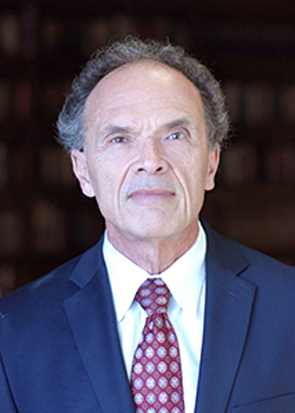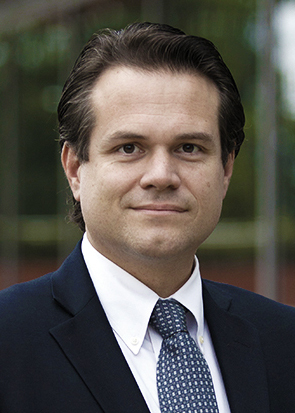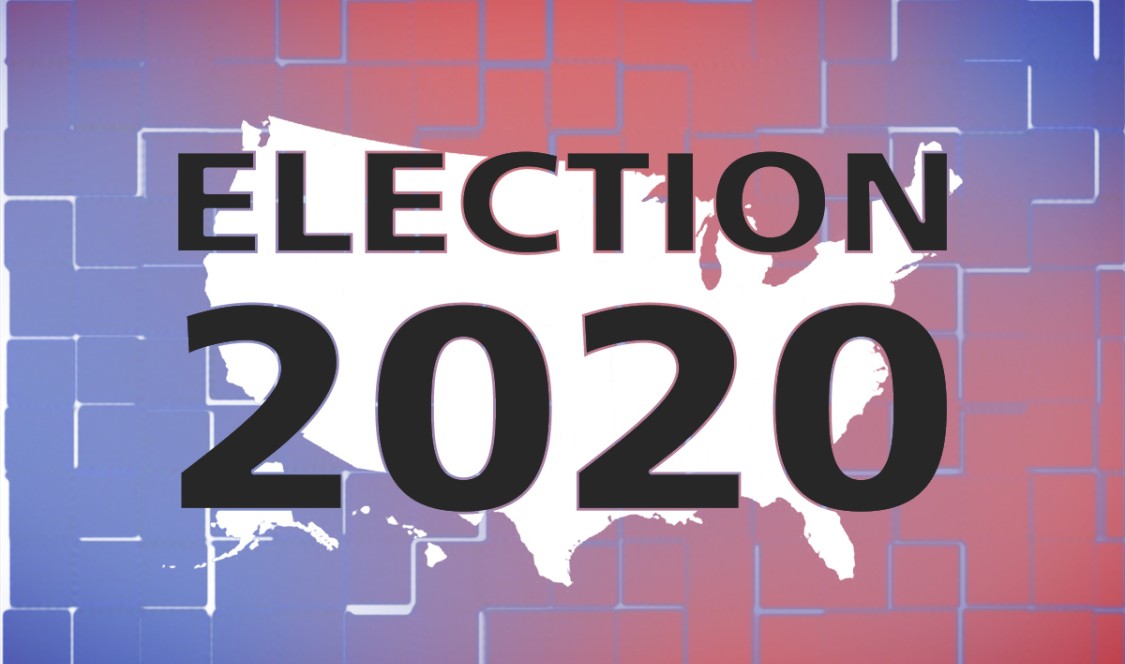With election day behind us but several unknowns still front and center, CMC professors have answers to some of our most pressing questions - where we are now, how we got here, and what lies ahead. In the days to come, they will continue to respond to questions about the post-election world. Email your questions, and we will attempt to get answers from our experts, who span the fields of politics, government, and history.

George Thomas, Wohlford Professor of American Political Institutions
Q. Will the US Supreme Court hear President Trump’s legal arguments?
A. President Trump’s legal challenges are very limited. There is, so far, no evidence of election fraud. There is almost no chance the Supreme Court will hear a case at this point. The one legal challenge that had a chance regarded mail in ballots in Pennsylvania that came in after Election Day. The Supreme Court of Pennsylvania ruled these ballots could be accepted until Nov. 6, basing its decision on Pennsylvania election law and the Pennsylvania Constitution. Yet, because those ballots might be subject to a legal challenge, they were set aside and not included in the current vote count. Justice Alito issued an order making certain that Pennsylvania election officials were proceeding in this manner, which election officials have certified.
The U.S. Supreme Court declined to hear this case before the election. If these late arriving ballots could have plausibly changed the election result in Pennsylvania, the Court might well take up the case. But with President Elect Biden leading in Pennsylvania by over 45,000 votes, a figure that is likely to grow, this looks highly unlikely.
Based on what we are seeing, there is almost no chance that courts will alter the results.

Jack Pitney, Roy P. Crocker Professor of Politics
Q. When does it become official that President-elect Biden has all of the electorates?
A. Major news organizations have estimated that Biden will win the electoral vote. He will probably end up with 306, the exact same number as Trump four years ago (though Trump lost a couple of faithless electors, which brought his number down to 304). But it is misleading to call the result "official." Most states will not certify the results for some time to come. Electors vote in their states on December 14. The House and Senate officially count the votes in a joint session on January 6. By the strictest definition, only then is Joe Biden officially, unambiguously "president-elect."
The law does allow the General Services Administration -- a federal agency in charge of administrative matters such as office space -- to ascertain the apparent president-elect. That decision is important because it allows the incoming team to spend government money and work with federal agencies on the complicated business of transferring power. Except in 2000, when there were legal questions about the vote count, the ascertainment has always followed shortly after the election. This time, the GSA head -- a presidential appointee -- is declining to do so, at least for the time being. The longer the delay, the harder it will be for the Biden administration to get up and running. That is a problem, especially amid a worsening pandemic.

Tamara Venit-Shelton, associate professor of history
Q. Will Trump run again in 2024 and what does history tell us about this?
A. There is no legal barrier that would prevent Trump from running for president again in 2024. Only one former president has successfully re-run for office after leaving it. Grover Cleveland won the Election of 1892 after being voted out after his first presidential term – 1884-1888 – making him our 22nd and 24th president. In 1888, Cleveland, a Democrat, lost the Electoral College vote to his Republican opponent, Benjamin Harrison. Cleveland did win the popular vote in that election, which may have assisted with his comeback in 1892. (Trump – who lost the popular vote to Biden – will have no such assistance if he chooses to run again in 2024.) Theodore Roosevelt, a Republican who became our 26th president after William McKinley’s assassination in 1901, and went on to win the presidency on his own right in 1904, also ran again after leaving the office in 1908. He declined to run in 1908 and opted instead to handpick his Republican successor – William Taft. For various reasons, Roosevelt disapproved of the way Taft managed his administration so Roosevelt ran for President in 1912 on the Progressive Party ticket – essentially a wing of the Republican Party united in their dissatisfaction with Taft. Roosevelt and Taft each secured about 25% of the vote; Democrat Woodrow Wilson went on to win with 41% of the vote. (Socialist Party candidate Eugene Debs earned 6% of the vote.)
What does this record mean for Donald Trump and the likelihood of another presidential run in 2024? Probably nothing. We live in a very different historical moment from men like Grover Cleveland or Theodore Roosevelt. The corridors of power are not so narrow nor are they so difficult to penetrate as they once were. Trump will surely remain an important and visible leader in the Republican Party, but other leaders will emerge over the next four years as the pandemic, economic recovery, and other pressing national and international issues create opportunities for other Republican office-holders to make their voices heard.

Kenneth Miller, Rose Associate Professor of State and Local Government
Q. What is Kamala Harris’s role?
Kamala Harris will be in an unusually advantageous position as she assumes the office of vice president. President-elect Biden has said that Harris’s functional role will be similar to the one he filled during eight years as Barack Obama’s VP—that is, she will be “the last voice in the room” in important deliberations and will be given a portfolio of significant responsibilities. Moreover, Harris will be the next in line for the presidency. That status always has potential weight, but even more so now because Biden will be, at 78, the oldest person ever to serve as president on the day he takes office. Even if he is able to serve a full term, it is far from certain he would run for a second. If not, Harris would surely become the Democratic Party’s presumptive nominee for 2024. If Harris plays her cards well, her status as “president in waiting” could give her added clout within the new administration.
Q. Is there any significance in Kamala Harris coming from California?
A. Harris’s election to the vice-presidency has produced many firsts—she will be the first woman in that position, the first African American, the first person of South Asian descent. She also will be the first California Democrat to serve as vice president. (Until 2020, no Democrat from California had even been nominated for either president or vice president.) Harris thus represents the emerging strength of the Democratic Party in the nation’s most populous state. We can expect her to help pull other Californians into the administration by tapping into its deep bench of Democratic talent, and to help introduce at least parts of California's progressive policy model to the federal level.

Andrew Sinclair '08, assistant professor of government
Q. What is Biden’s biggest challenge?
A. There are a lot of challenges facing the new president. I suspect none will be greater than this: Biden needs to hold his coalition together -- while making some new allies or, at least, making his opponents slightly less hostile. Biden won the national popular vote by a historically significant margin, but the vote in a few key states was close; he needed everybody to help. The Democratic Party may very well need all those voters again in 2022 and 2024. In particular, Democrats will have an easier time of passing legislation if they increase the number of seats they hold in the House in 2022 and also make gains in the U.S. Senate that year. Yet, Biden also won with a very ideologically diverse coalition, and it is going to take some very clever policy work to find a way to keep everyone happy (enough) to keep them engaged and voting.

George Thomas, Wohlford Professor of American Political Institutions
Q. What would election-result legal battles look like in the U.S. Supreme Court?
A. The Supreme Court could take a case if there was a clear legal question based on facts. Even then, it is very likely the Court would only take the case if it would change the election results, and whoever was bringing suit would have to start in a lower federal or state court.
The majority of the Court would probably prefer to stay out of it, unless a very clear legal issue had to be resolved in order to know who won the election. In Pennsylvania, for instance, there could be a question about whether it’s lawful to accept late ballots. There is a dispute about whether these late mail-in ballots are in accord with Pennsylvania election law. If there are, say, 30,000 of them and that could change the outcome of the election, the Supreme Court might take up the case depending on how a lower court decided. But the Supreme Court actually declined to hear the case before the election.
In Bush v. Gore, which effectively decided the 2000 presidential election, just over 500 votes in Florida separated the candidates. Whoever won Florida, won the presidency. There, the legal dispute was over recounting ballots by hand in four counties. The question was whether it was constitutionally permissible to hand count ballots in only selective counties, and whether it was acceptable to do so without supplying a clear standard to guide the election officials counting the ballots. The Florida Supreme Court had ordered the hand counting in the four counties, but did not give the election officials clear guidance on how to determine the intent of the voter. The Supreme Court found that this violated the equal protection clause of the Fourteenth Amendment and halted the recount.
From what we know right now, it is not clear we have the sort of dispute the Court would likely take up. But that could change.

Kenneth Miller, Rose Associate Professor of State and Local Government
Q. What are California’s stakes in the presidential race?
A. To put it mildly, California’s leaders are deeply invested in a Biden-Harris victory.
Over the past decade, Democrats have exercised one-party control in Sacramento and have developed the nation’s most ambitious state-level progressive policy agenda. During the Obama years, California’s leaders closely collaborated with administration officials to implement Obamacare, expand Medicaid, establish new protections for undocumented immigrants, develop new climate policies, and more.
By contrast, when Donald Trump won the presidency in 2016, Sacramento was shocked. The day after the election, the state’s legislative leaders vowed that California would “lead the resistance” to the new administration with “every tool at our disposal.” The state has backed up that vow. Among other acts of resistance, it has filed more than 100 lawsuits in federal court challenging Trump administration policies. At the same time, the Trump administration has worked overtime to undermine California’s progressive policy model.
If Joe Biden and Kamala Harris are inaugurated in January, California will celebrate a Democratic restoration in the White House and will become the new administration’s lead partner among the states in advancing progressive policies.
Kamala Harris would have a distinctive role in this partnership. Harris would be the first Democrat from California to serve as vice president and would surely facilitate policy coordination between Sacramento and the White House. On many issues, the Biden-Harris administration would seek to implement California’s policy vision at the national level.

Andrew Busch, Crown Professor of Government and George R. Roberts Fellow
Q. What happens when there is an electoral vote tie?
A. In the event of a tie in the Electoral College, the election goes to the House of Representatives, with two wrinkles. First, it would be the newly elected House, not the current House, that would vote. Second, the vote is by states, with a majority required to win. In other words, the 53 California Representatives would caucus and decide how to cast California's one vote. Each state would follow this procedure. A president would be elected once someone reaches at least 26 states. This procedure has only been used twice in U.S. history, in 1800 (Thomas Jefferson) and 1824 (John Quincy Adams).
Q. Assuming Biden wins, will the next Republican candidate in 2024 be “Trump-like” or will they go back to a candidate more like the GOP of the 2000s?
A. It will be difficult for Republicans to go back all the way to their pre-Trump shape. The party coalitions have shifted under Trump, and at least some of that is likely to stick. However, it is important to remember there are (at least) two things that make Trump. … Trump. One is his distinct issue positions, for example on immigration and trade, that were not the same as previous recent Republican presidents. The other is his combative (and some would say insulting) approach to the office, which turned off many voters. In terms of the former, Republicans will express a range of views designed to appeal to the substantive concerns Trump raised and tapped into. However, I think it is unlikely they will nominate someone of Trump's personality, character, and temperament, partly because that aspect of Trump has been (I think) counterproductive and partly because there is no one else in the American political universe like Trump in those respects. So, I would expect a more conventional political figure sounding similar themes, but trying to add back some lost voters on the margins.

Lily Geismer, associate professor of history
Q. Do you see demographic shifts that may heavily influence the outcomes of future elections?
A. Great question! The clearest lesson has been the changing demographic composition of the suburbs. Our collective gaze on Arizona and Georgia these past few days has revealed the rise of African American suburban residents and in metropolitan Atlanta and Latinx residents outside of Phoenix. While Trump did carry Texas, Biden’s success with suburban voters was notable. For instance, in Houston’s Harris County, which was once a bedrock Republican district, Biden received 56 percent of the vote in large part due to rise in Asian, Latinx and African American voters who have moved there. The results indicate that Texas could turn blue in the next couple of election cycles. Such a shift could even more dramatically change the electoral map and electoral vote counts in elections to come. The results also indicate that grassroots mobilizing and outreach to underrepresented groups will be a powerful tool for political campaigns.

Andrew Sinclair '08, assistant professor of government
Q. What adjustments were made to the 2016 polling for 2020? And what else could have gone wrong?
The 2016 election refocused everyone on American political institutions. Look at the difference between the final FiveThirtyEight estimates for the national popular vote and the percentage of the popular vote the candidates received. Clinton: 48.5 estimated; 48.2% final. Trump: 44.9% estimated; 46.1% final. Clinton was expected to win the popular vote – and she did! Headed into the 2020 election, following Clinton’s defeat in the Electoral College, renewed a focus on state-specific polling.
For a pre-election discussion of changes in polling between 2016 and 2020, see here. Some of these changes were pretty good. Additionally, some things about the environment made polling easier: fewer last-minute events (the 2016 Comey letter) and less involvement of third-party candidates (Johnson, Stein). Other features of the 2020 environment made polling more challenging. It will take us some time to figure out how COVID-19 impacted both polling and political participation in this election. It’s not just people getting sick. It is also that the parties responded to it asymmetrically, with Democrats (for example) pushing voting by mail. A lot of survey work rests on correctly identifying who will be a “likely voter,” and have their vote counted; we will want to look pretty closely at how COVID-19 might have impacted this.
Some challenges for polling will persist, though, beyond President Trump and COVID-19. Among others, the biggest is the simple difficulty in getting people to participate in surveys. There are partial solutions to some of these problems, but they are always only partial solutions. Additionally, state-specific polling is always going to be harder to do than national polling: some states are small, or have populations that are harder and more expensive to poll than others.
Two big final points, though. (1) Let’s get all the vote in – and then see what it looks like. (2) Polls never were – and never will be – a magic crystal ball that will allow you to see the future perfectly. Generally speaking, though, “data” is better than “no data.” Going forward, it will remain a good guess that the person ahead in the polls is more likely than not to win the election.

Jack Pitney, Roy P. Crocker Professor of Politics
Q. Where do we go from here?
A. As of Wednesday afternoon, the outcome is still in doubt. But it is possible to make two observations about political life in 2021.
First, the president will have difficulty getting his legislation through Congress. Although they have apparently suffered a net loss of seats, the Democrats retain their majority in the House. So, a reelected President Trump can count on opposition from that quarter. In the Senate, the Republicans may have kept control. The best that Democrats can hope for, depending on the Georgia seats, is a 50-50 split, with a newly-elected Vice President Harris casting tie-breaking votes. Either way, passing major controversial bills will be tough.
Second, the country is divided and suspicious. Many people on the losing side will think that the ultimate winner has cheated his way to victory. We can only hope that the victor will be magnanimous. He won't be able to heal partisan divisions, but he can avoid making things worse.

Andrew Sinclair '08, assistant professor of government
Q. Did polling “fail again” in 2020?
A. First of all, I am a firm believer in counting all the votes. While in some states the ultimate result may not change (in terms of who wins in the Electoral College), additional movement from late arriving votes or other counting issues can change our understanding of how well the results match the pre-election polling. As many others have said as well: it may take some time to have a final answer, so I hope everyone will remain patient and just let election officials count the votes.
Still, at least at the time I write this, it does seem like the election was more competitive than the pre-election polling might have suggested. For example, Biden had a reasonable advantage in Florida (+2.3 on FiveThirtyEight, which yielded a 69% chance of winning in their model). At this point, the New York Times is reporting Biden losing Florida with only 47.8% of the vote (Biden -3.4). Biden was also expected to be comfortably ahead in several races (states he may yet still win, some of which he is now leading) that will be very close calls.
Just shy of 6 a.m. (Eastern), Nate Silver wrote, “in some ways this is good evidence for ‘Biden can probably survive a 2016-style polling error when Clinton couldn’t.’” It may turn out to be that the broad community interested in polling concludes that this was indeed a 2016-sized miss, if for other reasons. There is something to learn after every election. Many of the improvements in methodology from 2016 are real improvements, but it looks like there is more work to be done. Looking ahead, polling will remain one of our key tools for understanding American voters.

Lily Geismer, associate professor of history
Q. What does the central place of suburban voters in the 2020 election mean for the future of the Democratic Party?
A. From President Trump’s Twitter feed to the New York Times, it was clear that middle-class moderate suburban voters would be a central part of the election and crucial to Biden’s victory. While it is still too early to get a picture of the national landscape, looking to the results in California offer some important lessons.
Despite California’s efforts to claim a sense of exceptionalism, the voting patterns of its suburban districts—especially in places like Orange County—are indicative of larger trends, especially in affluent suburban communities. In Orange County, as of Thursday morning, Biden won 65 percent of the vote. At the same time, the County voted down several ballot initiatives addressing progressive issues, including Affirmative Action rent control, making homeowner property valuation fairer, and increasing property taxes on businesses to pay for government services. The voters in Orange County also voted in favor of an initiative to bestow certain property tax privilege on older homeowners, as well as Proposition 22, which will curtail the protections of workers in the gig economy and has wide national implications.
These results suggest that even if Biden wins, it will remain challenging for him to fulfill his promise to offer the most progressive agenda since the New Deal, ensure the cooperation of the progressive wing of the party, and continue to maintain the support of moderate suburban swing voters in places like Orange County. The Democratic Party, therefore, faces an important reckoning in its effort to achieve an agenda to meet the many problems of the moment and create a long-term stable majority.

Zachary Courser ’99, assistant professor of government
Q. If the Senate is in GOP hands and Joe Biden is president, what federal policy agenda can we expect in the next two to four years?
A. Under Sen. Mitch McConnell (R-KY), who is likely to continue as Majority Leader, the Senate has focused on judicial appointments more than legislating the last four years. This activity was made easier through an amendment to Senate rules under Sen. Harry Reid (D-NV) in 2013 that disallowed filibustering judicial appointments. Deemed the “nuclear option,” and once considered an extreme response to solving the problem of judicial vacancies on the federal bench, both sides of the aisle have since accepted this change. Without a Republican president to make judicial appointments, McConnell is likely to reverse course and steadfastly oppose President Biden’s judicial nominees unless they are considered acceptable to Senate Republicans. Moreover, McConnell is likely to use his narrow majority to stymie the legislative agendas that originate from the White House or from Speaker Pelosi’s House majority, choosing to focus instead on the 2022 midterm election. You can be forgiven for thinking this sounds familiar.
The reaction from Biden will likely be to work through the federal administration and by executive order to achieve policy change. This means that foreign policy, which is more unilaterally controlled by the executive, will likely be a major focus of Biden’s. The many executive orders and foreign policy stances of the Trump administration that were objectionable to Democrats will probably be undone very quickly at the outset of Biden’s presidency. Say goodbye to tariffs. It also means that whatever policies Biden sets through executive order can just as easily be undone by the next administration. Reforms to federal policy, whether on climate change, immigration, or healthcare, will continue to be short-lived. And if President Obama’s administration is a guide, we should expect that these executive orders will be legally contested. Lastly, the 2022 and 2024 elections will likely occupy the nation’s political energies, as both sides of the political divide hunker more deeply into their trenches and wait to fight the next political war at the ballot box.

Tamara Venit-Shelton, associate professor of history
Q. What is the so-called “Latinx Vote?”
A. News analysis has made much of the gains for Trump among Latinx voters in Texas and Florida in 2020. Biden won the majority of Latinx voters in those states by about a 2:1 margin, but in Texas, he fared less well than Hillary Clinton did in 2016, and in Florida, Cuban American Republicans may have helped Trump secure a victory in that state.
As a demographic category, Latinx peoples are quite diverse: Their families hail from Cuba, Puerto Rico, and Mexico, as well as other parts of Central and South America. Racial, generational, and gender divides, as well as religious differences, are reflected in their voting patterns.
Partisan loyalties among Latinx voters have developed over several decades. Beginning with Ronald Reagan, Republicans have energetically courted the Latinx vote with appeals to family values and traditional gender roles, the “self-made man” ideal, patriotism, and anti-Communism. Largely because of their families’ forced exodus from Cuba in the wake of its Communist Revolution, Cuban Americans tend to vote for Republicans at a higher rate than Mexican Americans and Puerto Ricans.
While many Latinx voters are repelled by Republican expressions of nativism or xenophobia, Latinx voters do not have a monolithic relationship with the immigration system, nor do they have a monolithic set of desires when it comes to reforming border control policies.
This year there were a record 32 million eligible Latinx voters, and their numbers are projected to grow. 2020 will provide important lessons for how campaigns can mobilize the diverse constituents of this critical voting bloc in future elections.

Andrew Busch, Crown Professor of Government and George R. Roberts Fellow
Q. How do the congressional elections stack up compared to past presidential election years?
A. It used to be the norm that the winning presidential candidate would have substantial “coattails”—in other words, bring in with him a large number of his party’s candidates for Congress. In 1948, for example, Harry S. Truman won by a modest margin but carried in with him a Democratic gain of 75 seats in the House and nine in the Senate. For the last 70 years, the effect has been much more modest. There are a few important exceptions: in 1964, Lyndon Johnson’s Democrats gained 37 seats in the House; in 1980, Ronald Reagan’s Republicans gained 34 seats in the House and 12 in the Senate, enough to win a majority there for the first time since 1954; and in 2008, Barack Obama’s Democrats expanded their small congressional majorities by 23 in the House and eight in the Senate. Most of the time, though, presidential coattails have been much more modest, if they existed at all. Since 1988, the presidential winner’s party has actually lost seats half the time, and has gained more than nine seats only once (2008). It is in midterm elections that most big changes have been made in Congress.
Congressional results in 2020 are still being tabulated, but it is clear there will be no gains by the presidential winner—whether Biden or Trump—that are on the magnitude of a 1964, 1980, or even 2008. As of midday on the day after the election, Republicans had apparently gained five seats in the House. In the Senate, Democrats had gained a net of only one seat, not enough to obtain a majority. In three other states Democrats had hoped to flip, Republicans led, though the races had not been called yet. One Democratic incumbent was defeated and one more was trailing. In one and possibly two cases in Georgia, a January runoff election would be held. The House results were not widely expected, and many analysts had thought Democrats had a chance of posting 1980-like gains in the Senate.
Short answer? However the close races turn out, as in most presidential election years since 1988, the presidential candidates did not inspire voters to give them a lot more to work with in Congress. At the congressional level, if the results hold up, Republicans had a better night than many analysts expected. The big picture, though, was business as usual.

Kenneth Miller, Rose Associate Professor of State and Local Government
Q. What message did California send in this election?
A. One can say the message is mixed. The state again voted overwhelmingly for the Democratic presidential ticket, and is on track to reject President Trump by an even greater margin than it did four years ago.
Voters also maintained large Democratic majorities in the California Legislature and the state’s congressional delegation. The Golden State is still deep blue.
But when they turned to ballot propositions, Californians rejected the latest wave of progressive policy proposals. Most notably, voters sided with Uber, Lyft, and other app-based delivery and transportation companies to allow drivers for these companies to work as independent contractors rather than be classified as employees—a union-backed requirement that threatened the entire sector’s business model. By a decisive margin, voters aligned with the companies against the Democratic legislature and organized labor on this issue.
Voters also soundly rejected Proposition 16, a legislative proposal to repeal California’s constitutional ban on race- and gender-based affirmative action in public hiring, contracting, and university admissions. They also rejected a measure to expand rent control at the local level. And they repealed a recent decision by the legislature to abolish cash bail in the state.
Finally, voters appear to have rejected Proposition 15, which would have removed long-standing property tax limits on commercial property, another measure backed by organized labor and opposed by the business sector.
What’s California’s message for the rest of the country—especially for Democrats? Perhaps the message is that, even in deep blue California, popular support for the party’s progressive agenda has its limits.

